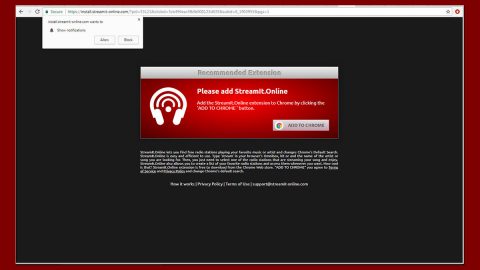What is Discrete Search? And how does it function?
Discrete Search is a shady browser extension that functions as a search engine. It is presented as a tool that could provide users with improved search results to improve the browsing experience. If installed, it quickly changes the default settings of browsers. Consequently, you will be seeing a new homepage, search provider, and the new tab page. This is why Discrete Search is classified as a browser hijacker and PUP.
After its installation, you will notice the sudden appearance of annoying ads like pop-ups, banners, and in-text links. And when you try using it to search some query online, instead of seeing related search results, you will mostly see sponsored content from the affiliated sites of Discrete Search. All these ads will most likely slow down your browser and eventually ruin your browsing experience. What’s more is that some of these ads are misleading ones and could redirect you to highly suspicious sites.
How is Discrete Search distributed online?
Discrete Search, like other browser hijackers, is distributed using freeware and shareware. These kinds of software packages can be found on free sharing sites. You could end up installing browser hijackers like Discrete Search if you don’t pay enough attention during the installation. When installing shareware or freeware, you have to always opt for the Custom or Advanced mode rather than the standard one so that you have the option to remove any extra programs attached in the package.
Deleting Discrete Search isn’t as easy as you think so you must use the removal guide below as well as the advanced guide that follows to completely remove this browser hijacker from your computer.
Step 1: Start the removal process by closing all the browsers infected with Discrete Search. If you’re having a hard time closing them, you can close them using the Task Manager just tap on Ctrl + Shift + Esc.
Step 2: After you open the Task Manager, go to the Processes tab and look for the infected browser’s process and end it.
Step 3: Then close the Task Manager and open Control Panel – to do so, tap the Windows key + R, then type in appwiz.cpl and then click OK or press Enter.

Step 4: After pulling up Control Panel, from the list of installed programs, look for Discrete Search or any suspicious program you don’t remember installing and then Uninstall it.

Step 5: Edit your Hosts File.
- Tap the Win + R keys to open then type in %WinDir% and then click OK.
- Go to System32/drivers/etc.
- Open the host’s file using Notepad.
- Delete all the entries that contain Discrete Search.
- After that, save the changes you’ve made and close the file.
Step 6: Reset all your browsers to default to their default state.
Google Chrome
- Launch Google Chrome, press Alt + F, move to More tools, and click Extensions.
- Look for Discrete Search or any other unwanted add-ons, click the Recycle Bin button, and choose Remove.
- Restart Google Chrome, then tap Alt + F, and select Settings.
- Navigate to the On Startup section at the bottom.
- Select “Open a specific page or set of pages”.
- Click the More actions button next to the hijacker and click Remove.
Mozilla Firefox
- Open the browser and tap Ctrl + Shift + A to access the Add-ons Manager.
- In the Extensions menu Remove the unwanted extension.
- Restart the browser and tap keys Alt + T.
- Select Options and then move to the General menu.
- Overwrite the URL in the Home Page section and then restart the browser.
Internet Explorer
- Launch Internet Explorer.
- Tap Alt + T and select Internet options.
- Click the General tab and then overwrite the URL under the homepage section.
- Click OK to save the changes.
Step 7: Hold down Windows + E keys simultaneously to open File Explorer.
Step 8: Navigate to the following directories and look for suspicious files associated with the browser hijacker such as the software bundle it came with and delete it/them.
- %USERPROFILE%\Downloads
- %USERPROFILE%\Desktop
- %TEMP%
Step 9: Close the File Explorer.
Step 10: Empty the contents of Recycle Bin.
Refer to the advanced instructions given below to ensure the removal of Discrete Search as well as all the file residues it left behind.
Perform a full system scan using [product-code]. To do so, follow these steps:
- Turn on your computer. If it’s already on, you have to reboot
- After that, the BIOS screen will be displayed, but if Windows pops up instead, reboot your computer and try again. Once you’re on the BIOS screen, repeat pressing F8, by doing so the Advanced Option shows up.
- To navigate the Advanced Option use the arrow keys and select Safe Mode with Networking then hit
- Windows will now load the SafeMode with Networking.
- Press and hold both R key and Windows key.
- If done correctly, the Windows Run Box will show up.
- Type in the URL address, [product-url] in the Run dialog box and then tap Enter or click OK.
- After that, it will download the program. Wait for the download to finish and then open the launcher to install the program.
- Once the installation process is completed, run [product-code] to perform a full system scan.
- After the scan is completed click the “Fix, Clean & Optimize Now”button.
















